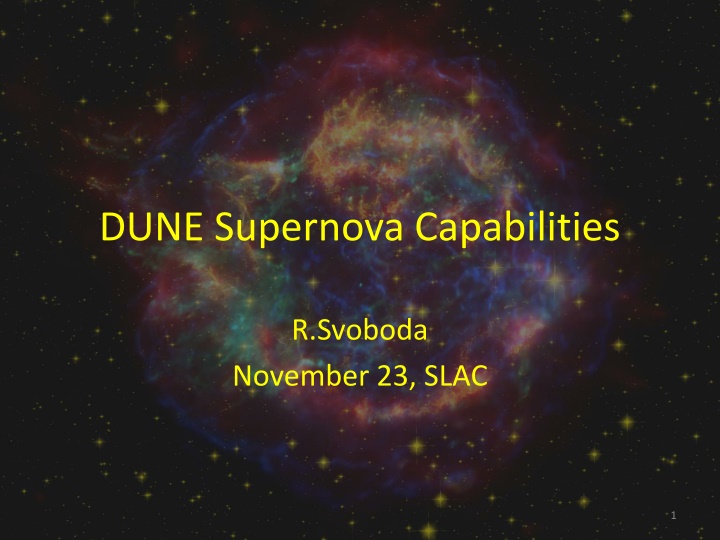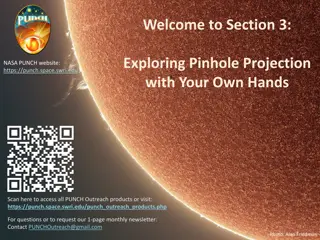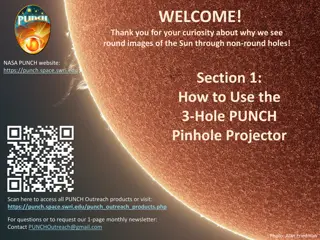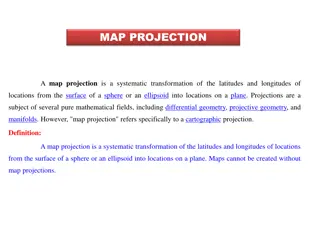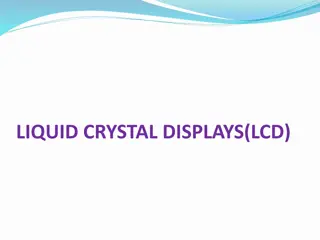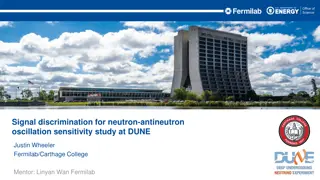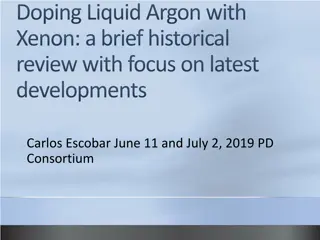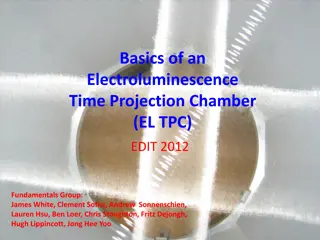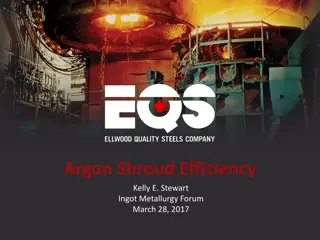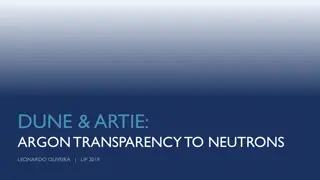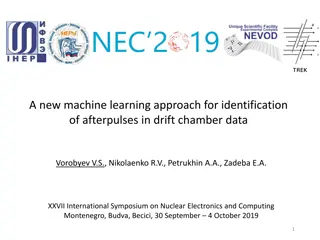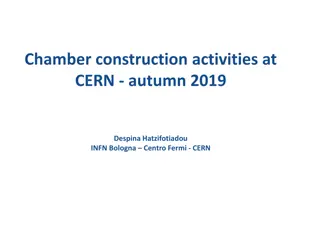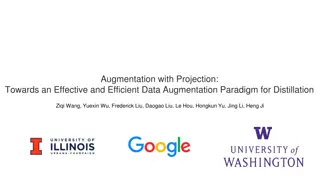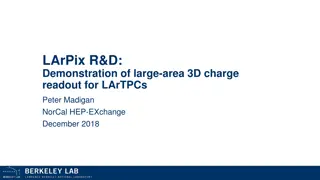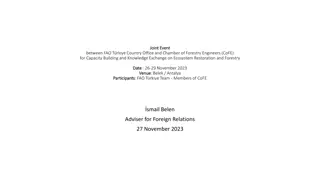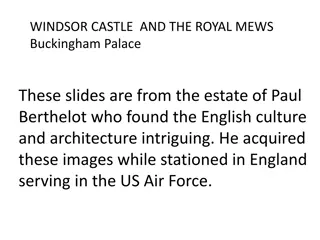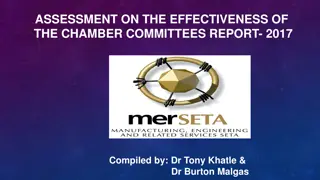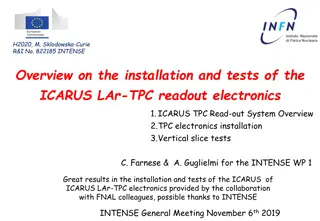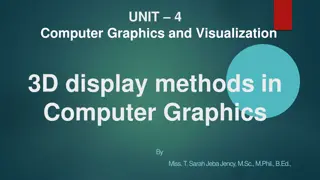Advancements in Liquid Argon Time Projection Chamber Technology
Explore the capabilities of the DUNE project with a focus on the Far Detector conceptual design, operating principles of Single Phase LAr TPC, and advantages/disadvantages of liquid argon as a detection medium. The innovative technology allows for precise tracking at the sub-1mm level and facilitates the detection of complex events while highlighting the importance of scintillation light collection in positioning within the volume. Dive into the world of neutrino detection and stay updated on the latest developments in the field.
Download Presentation

Please find below an Image/Link to download the presentation.
The content on the website is provided AS IS for your information and personal use only. It may not be sold, licensed, or shared on other websites without obtaining consent from the author.If you encounter any issues during the download, it is possible that the publisher has removed the file from their server.
You are allowed to download the files provided on this website for personal or commercial use, subject to the condition that they are used lawfully. All files are the property of their respective owners.
The content on the website is provided AS IS for your information and personal use only. It may not be sold, licensed, or shared on other websites without obtaining consent from the author.
E N D
Presentation Transcript
DUNE Supernova Capabilities R.Svoboda November 23, SLAC 1
DUNE 2
DUNE Far Detector Conceptual Design Field Cage Membrane cryostat 14.4 m CPAs CPAs 12 m APAs APAs 3.6m APAs Field Cage Steel Cryostat Detector Parameters (One 10-kton Module) 58 m x 12 m x 14.4 m (~50 times larger than ICARUS) Alternating Anode and Cathode Plane Assemblies resulting in four 3.6 m drift volumes Modular design to facilitate underground transport and installation Detector will fit in the cryostat planned 4
Schedule 5
Single Phase LAr TPC Operating principles ionizing events taking place in a volume of LAr (where a uniform electric field is applied) produce electron-ion pairs These charges drift along the field lines. The motion of the much faster electrons induces a current on the anode. The electrons can drift several metres if the LAr is highly purified (electronegative impurities < 0.1 ppb O2 equiv.) F. Arneodo , ICARUS
F. Arneodo , ICARUS Non-destructive multiple readout Raw Data from a 10 m3 prototype Scintillation Light Signals induced Time -- drift Charge e- C Ionizing track 1st Induction wire/screen grid A B Drift time Charge 2nd Induction wire grid (x view) d C d Collection wire grid (y view) p A B Drift time 400 ns sampling Continuous waveform recording F. Arneodo Imaging 2003
Liquid Argon TPC Advantages tracks recorded at sub 1mm level. Easy to distinguish multiple and/or complex events recoil hadrons visible even below Cherenkov threshold Argon is a scintillator Argon is relatively cheap (comparable to scintillator) Significant n ne cross section at low energy Disadvantages Drift is slow compared to Cherenkov or scintillation (~2 ms for DUNE) Need scintillation light collection for a "t0" and hence position in volume Complex nucleus compared to oxygen or carbon. Complicated cross-sections. No free protons No neutron capture tagging
Resonant neutron capture cross section on argon has large dip in the 50 keV region Slow energy loss due to heavy nucleus means neutrons can travel many 10's of meters before capture. Likely leave sensitive volume and not be recorded. 10
We could measure this with a fairly significant effort. Is it worth it? 20
Why Measure SN Bursts in DUNE? And why is it important to know the absolute cross-section, energy reconstruction ? Many reasons. Here are a few examples in the literature Neutrino cooling of the proto-neutron star is very sensitive to sterile neutrinos, which not only alter the flavor content of the neutrino flux, but also affect the efficiency (and hence time scale) or cooling. Example: see Irene Tamborra, Georg G. Raffelt, Lorenz H udepohlb, and Hans-Thomas Jankab "Impact of eV-mass sterile neutrinos on neutrino-driven supernova outflows" JCAP (2012). Also arXiv:1110.2104v3 23
0.5s 0.5 seconds after core bounce at r=1000km from the proto-neutron star. Neutrinos experience a very significant MSW resonance, causing almost complete conversion to sterile. Anti-neutrinos do not have an MSW resonance in an adiabatic conversion region, so there is almost no conversion. 24
2.9s We would not have seen this in SN1987A since sterile contribution is in electron neutrinos and not anti-neutrinos 6.5s 2.9 and 6.5 seconds after core bounce at r=1000km from the proto-neutron star. Color is same as for previous plot 25
Need to know absolute exclusive cross-sections better than the current 30-40% level to look for differences between WC, LS, LAr detectors Need to understand NC cross-section as a possible second check on the total (integrated) flux. ANY COOLING MECHANISM BEYOND "URCA" WILL PRODUCE A SIMILAR EFFECT (axions, dark matter, mirror matter, dark photons, etc.) 26
Dark Photons 27
Fig. 6. Parameter space in the dark photon (m,)(m,) plane excluded by the supernova (relevant) observations and the experiments E137 [16] and E141 [17]. Demos Kazanas, Rabindra N. Mohapatra, Shmuel Nussinov, Vigdor L. Teplitz, Yongchao Zhang Supernova bounds on the dark photon using its electromagnetic decay With 1000's of events one can dramatically reduce systematic and statistical uncertainty. SN could give a first hint of DM for this type of scenario. Nuclear Physics B, Volume 890, 2015, 17 29 http://dx.doi.org/10.1016/j.nuclphysb.2014.11.009 28
Measurement of Time-Structure Standing Accretion Shock Instability (SASI) frequencies of ~80 Hz are predicted by some models. These cause a variation in the neutrino flux that may be detectable. If we can see these then it means the neutrinos remained coherent to 10 ms levels over galactic distances. Affected by absolute mass and energy. 29
Variation in Luminosity is significant. Possibly detectable. 30
DUNE Design Questions 1. What features should DUNE be sensitive to in both the neutronization and cooling phase? Why are these features important scientifically? This will impact calibrations, energy resolution requirements, timing capabilities, photon collection system, and so on Not all aspects can be optimized to the maximum possible. This would require too much time and money. We have to choose were we put resources. 31
Neutral Currents 2. Detection of the NC reaction on argon may be possible to extract from the detector with sufficient energy resolution and with work done beforehand to verity the existence of a monoenergetic gamma ray from the reaction. How important is this? What would be the scientific payoff? How important is it to disentangle the flavor components of the signal? 32
Looking for the unexpected 3. Are there other feature or possibilities in the SN burst that we should be prepared to measure outside of the standard understanding of the physics of stellar collapse? 4. Are there other feature or possibilities in the SN burst that we should be prepared to measure that would be important to particle physics, such as mass hierarchy, collective effects, sterile neutrinos, or new interactions or particles? Are there robust signatures for these? 33
Diffuse SN Flux 5. In addition, measurement of Diffuse SN Background neutrinos will be difficult in DUNE. Is there a reason why detection in electron neutrinos would be especially compelling scientifically? Argon is a relatively heavy nucleus compared to oxygen or carbon. There is no neutron "double coincidence" flag Spallation daughter background is expected to be significant, but is unmeasured Controlling radon, U/Th and other contaminants in the construction and operation would be expensive and time consuming. It could lead to $10M's and significant delays in schedule. We would do this is compelling. Is it? 34
Design questions... 1. What timing is required to see such features? There is a big difference in cost and R&D effort in going from 2 milliseconds absolute and relative timing to 100 microsconds resolution. What do we gain? 2. What energy resolution is required to see scientifically interesting features? What would be the scientific loss if resolution were 30% versus 10% versus 3%? Note that time, money, and engineering effort to achieve such precise energy information is decidedly non-linear in the required precision. 3. We may not be able to take all events in a close SN. If the DAQ becomes saturated, we may have to either stop data taking at some point or pre-scale recording events. For example, we could record only 20% of all incoming data in order to get an unbiased snapshot of the whole burst. What is the best strategy to follow and why? 4. To what level must we be able to measure the absolute neutrino flux? In other words, if the cross-section were only known to 50% versus 25% versus 5%, what would we lose scientifically? 35
Summary There are choices to be made in the design of the DUNE detector. The time scale is relatively short. In six months the design of the first module will be frozen. The recommendations from this group will have significant impact on the field for the next twenty years or more. Thank you in advance! We look forward to your report. 36
